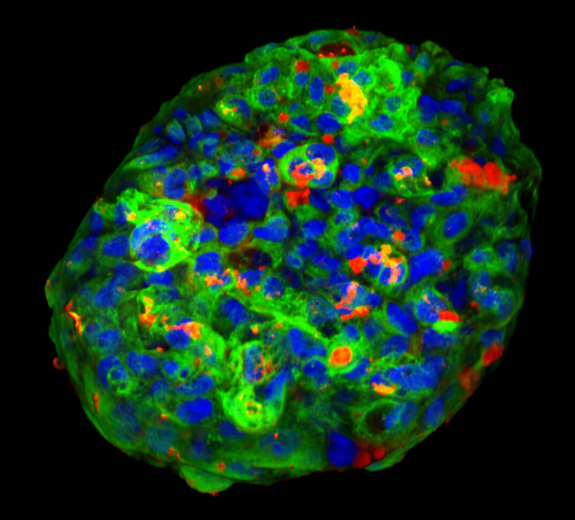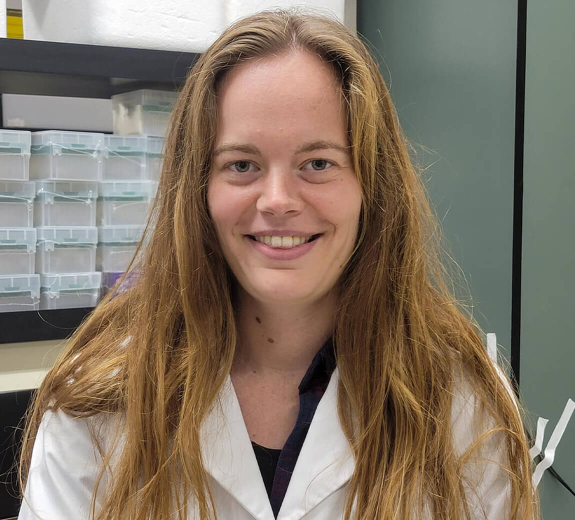“It’s the age-old problem in biomedical research,” Dr. James says. “Funders want more preliminary data before they back your research, but are hesitant to fund the studies to generate that preliminary data.”
That’s why BRI created a path that helps researchers jump-start their work: BRI’s Innovation Fund, which helps scientists develop new tools and technologies and use them to answer exciting new research questions.
Dr. James and Caroline Stefani, PhD, were awarded one of the first $100,000 Innovation Fund Grants at the end of 2023. Just a year later, their team is generating beta cells at BRI — and these results have already helped them secure another $400,000 in funding from Breakthrough T1D (formerly JDRF).







